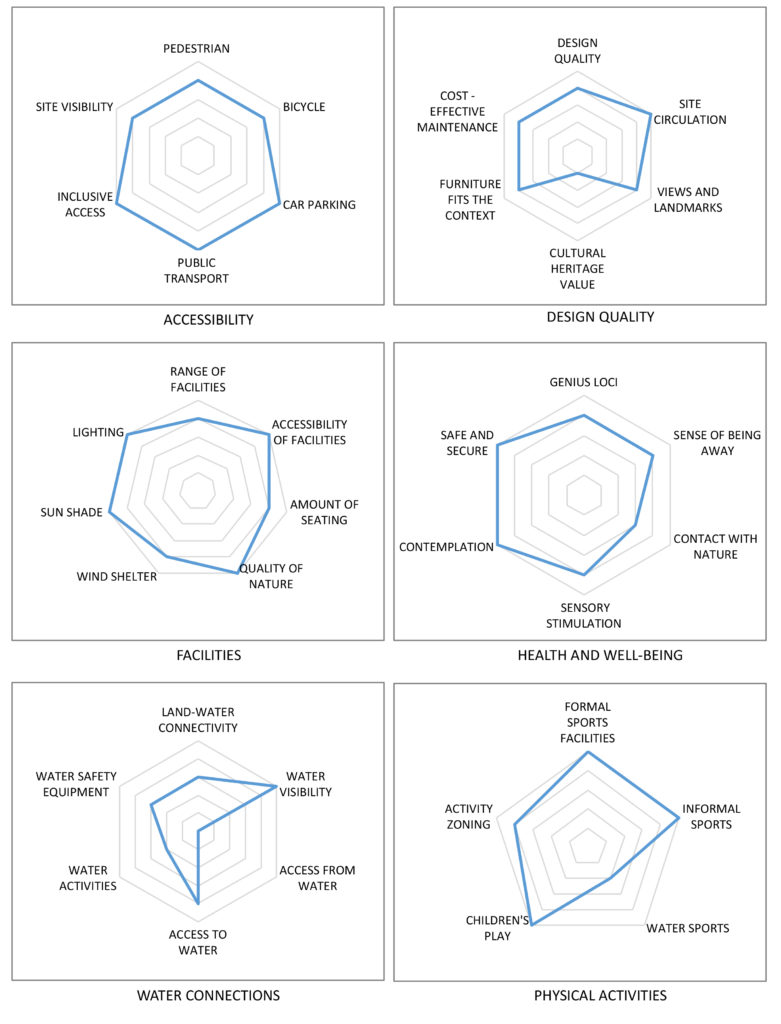
Architect
Atelier Dreiseilt, Germany
Type of Area
Stream with natural banks
Pond
Land/water interaction
Flood plains
Built Environment Types
Low built
High green
Scale of Impact
District/ neighbourhood
City
Intervention Scale (Spatial)
Large site
Project Types
Stormwater management
Green infrastructure
Habitat creation/restoration
Urban/ Rural
Inner urban area
Visibility and Openness
Fully enclosed
Fully contained view
Cleansing the Biotope
Bishan-Ang Mo Kio Park was developed as one of the largest urban parks in central Singapore that was realised under the Public Utility Board’s Active, Beautiful and Clean Waters (ABC) scheme. The project initiated in 2009 and designed by Ramboll Studio Dreiseitl, for Public Utilities Board/National Parks Board, Singapore.
The project transformed an old concrete canal into a 3 km long meandering river with natural banks offering different types of blue and green infrastructure and public spaces for different recreational and social activities. The project is located between two housing estates and first opened in 1988 (and is thus an early example of such a project) on a 62-hectare site. It attracts millions of visitors annually and hosts many organised events.
The aim was to create cleansing biotopes using bio-remediation, which provides many benefits through creating inclusive playgrounds, diverse habitats, community allotment gardens, places for nature play and recreation. Dealing with the wicked problem of urban hydrology, by applying principles of landscape ecology, the project helps to break away from civil-engineering solutions to a more nature-based bio-engineering approach that increases the carrying capacity of the river.
Coupled with re-engineering of the cross-section of the river using a nature-based approach, the project transformed community perceptions towards water in the city and promotes close interaction with nature and biodiversity. The design of the park with the river offered a balanced functional, ecological, and socio-cultural space.
The park, to date, is home for a growing number of species of wildflowers, birds, and dragon flies enriching the biodiversity. The site features which promote active and passive interaction with water include bridges, terraced riverside galleries, river platforms, steppingstone paths and a water playground.
The project incorporates a comprehensive river monitoring and a warning system, signal lights, sirens and audio announcements to provide early warning to the park users in the event of heavy rain or a possible flood.
Perception and Meaning
Place identity
Imageability
Sense of place
Accessibility
Knowledgeability
Health and Wellbeing
Restorativeness
Aesthetic experience
Place affordance
Increased physical activities
Better environmental perception
Interaction with Water
Visual
Tactile: partly in water

Website of the project:
http://www.dreiseitl.com/en/portfolio#bishan-ang-mo-kio-park
Google map reference
The project scores demonstrate how well it performs in all aspects of accessibility to the site from the surrounding community and the city. The site is very visible and provides good and sufficient car parking. It was found to have good design quality though it does not feature conservation or protection of cultural heritage as there are no elements to take into account, however it is successful at restoration of the natural heritage within the area.
The site is very well provisioned for public amenities and facilities. According to the scores the site offers good potential for health and well-being benefits through its safe and secure condition, opportunities for relaxation and contemplation, sensory affordances and some sense of being away. The aspect of contact with nature is limited to certain activities and perceived to be low compared with other aspects.
The water accessibility and connectedness in terms of direct tactile experience is low within the site and limited to a few areas. The site provides very good opportunities for nature play, different recreational activities, places to organise events and informal sports. The site is less suitable for water sports, as swimming and other immersive water activities are prohibited due to temporal changes of water level and water quality. The design is unique and an exemplar of a multi-functional nature-based solution that is iconic and a popular destination for recreation.
